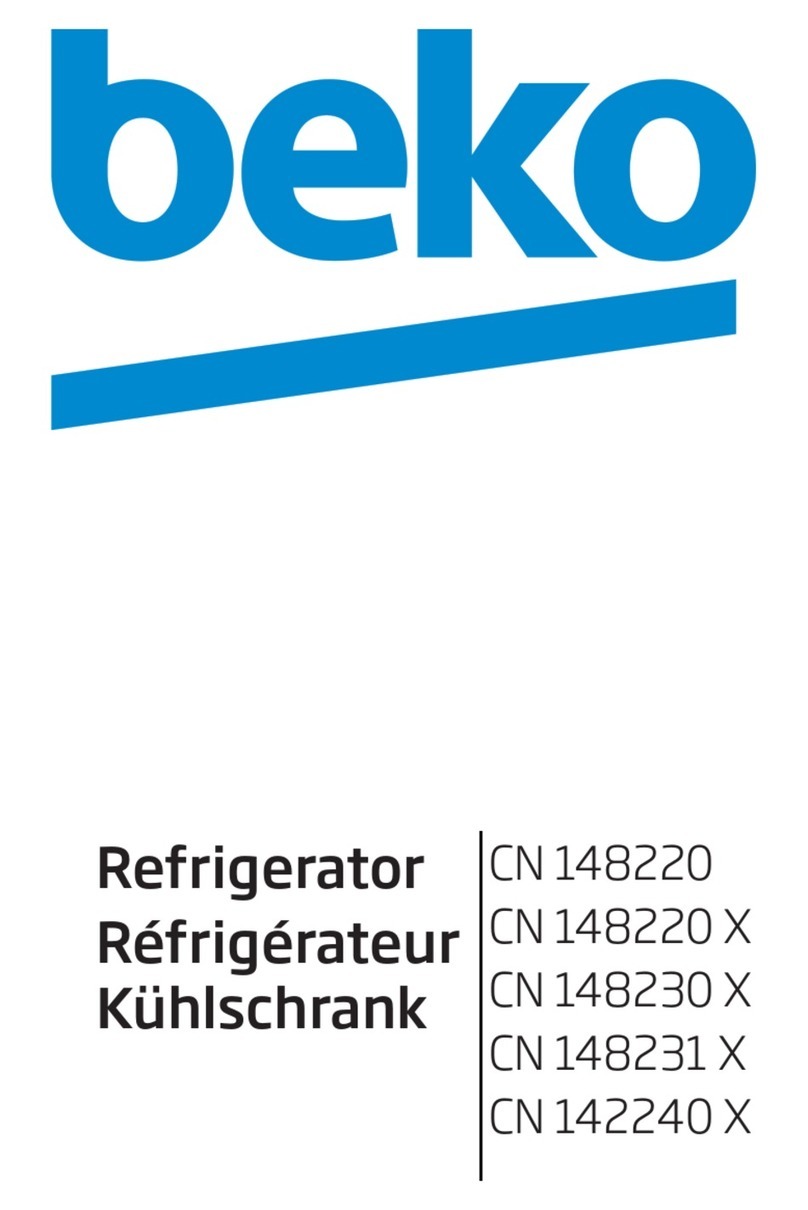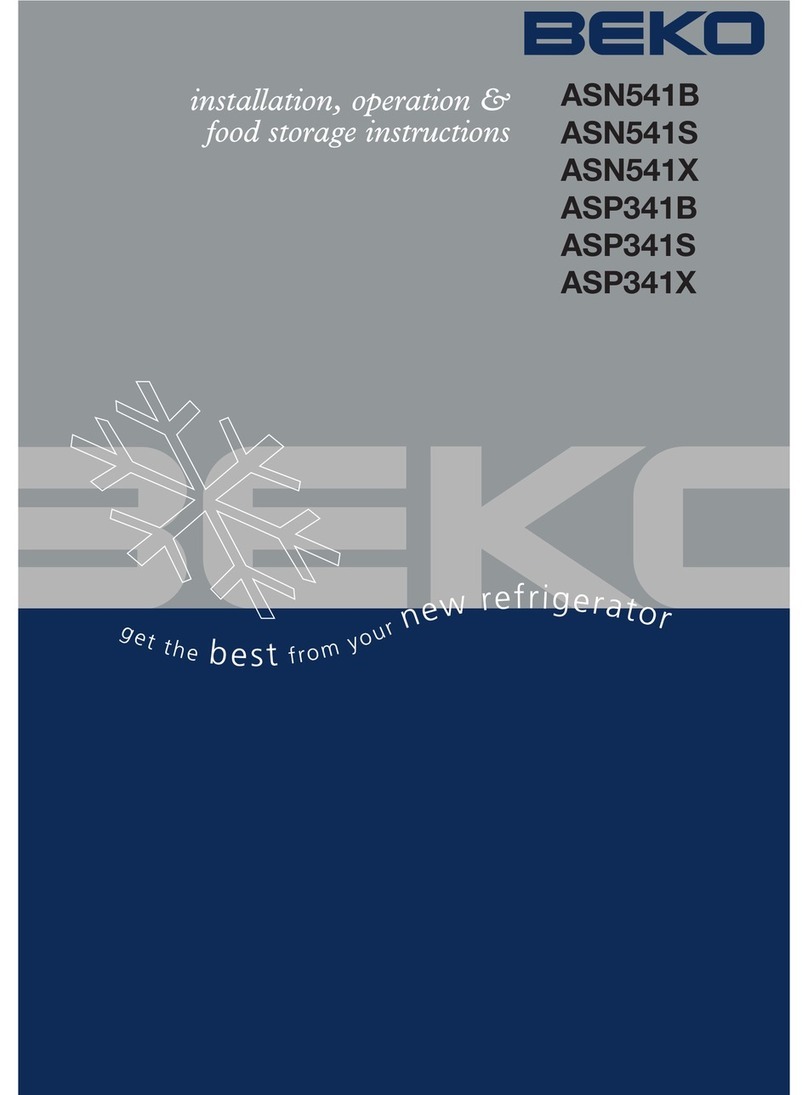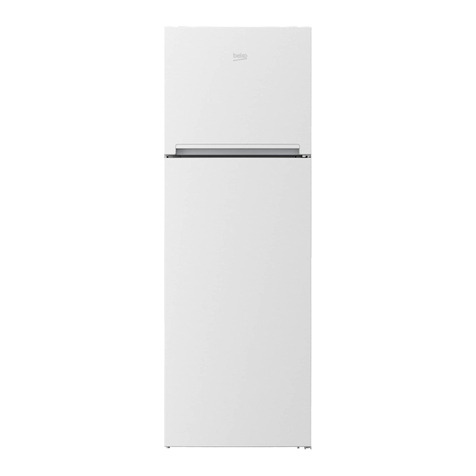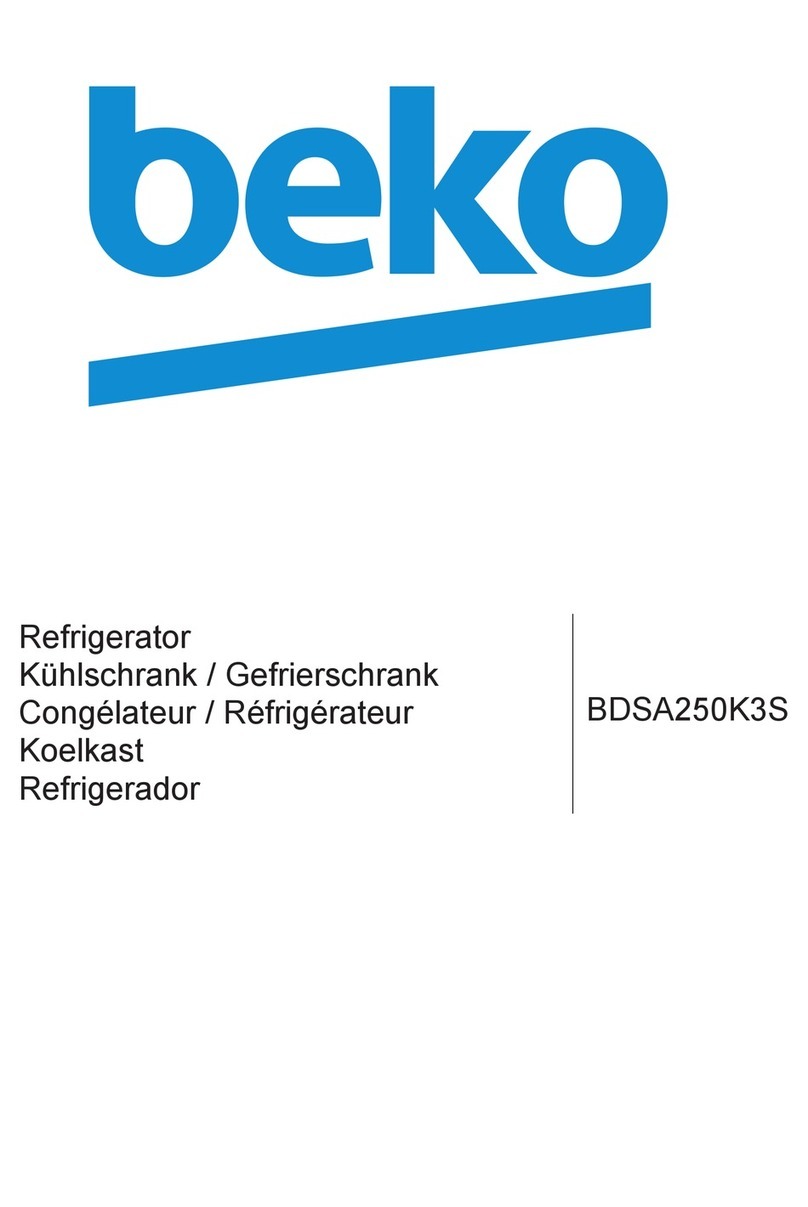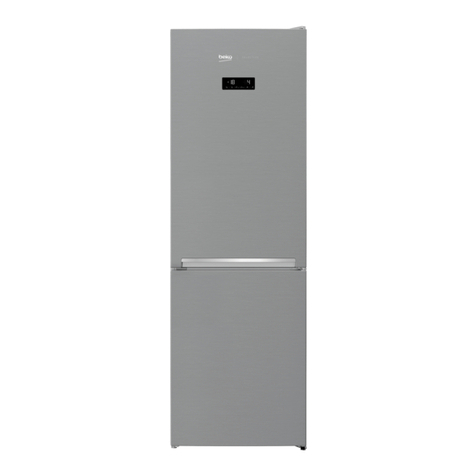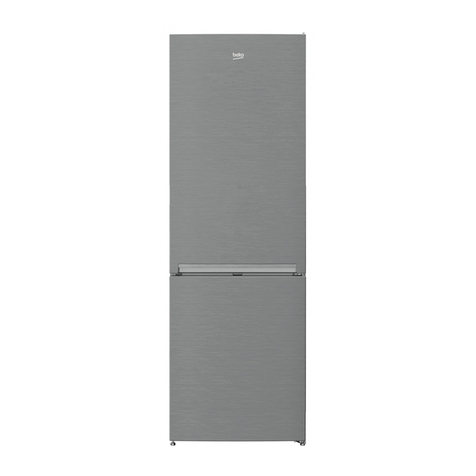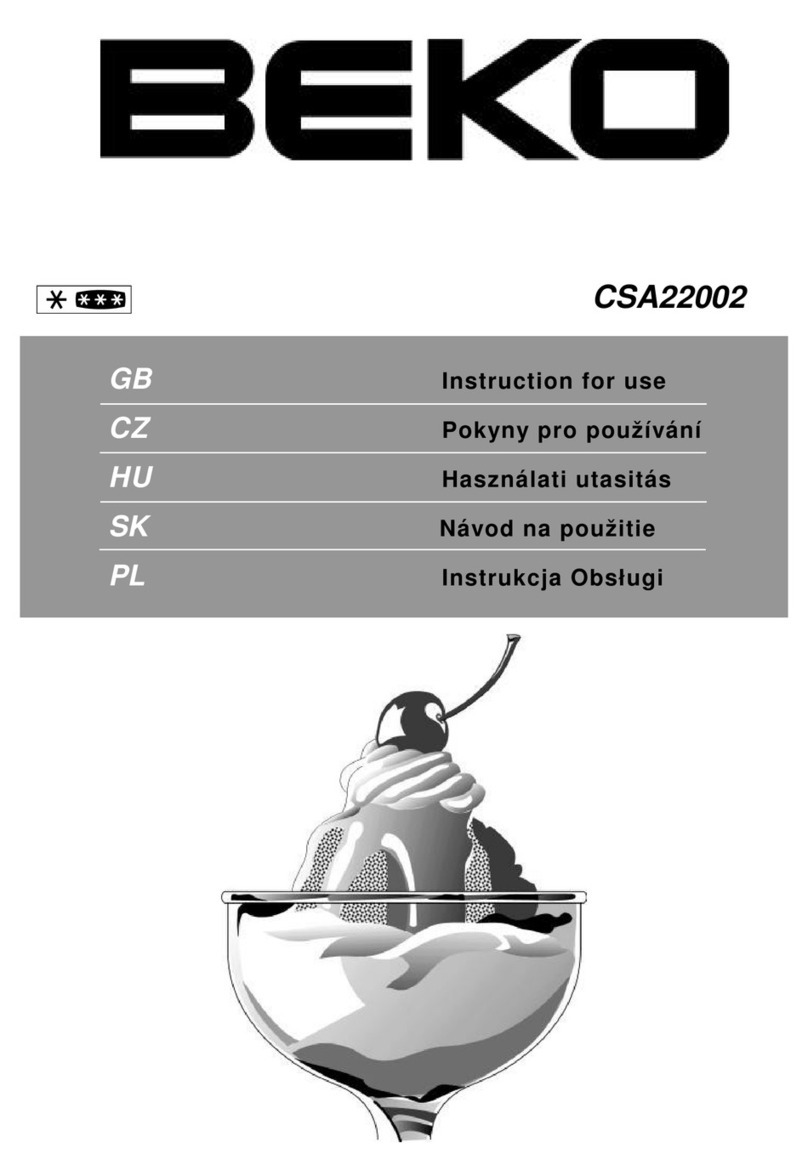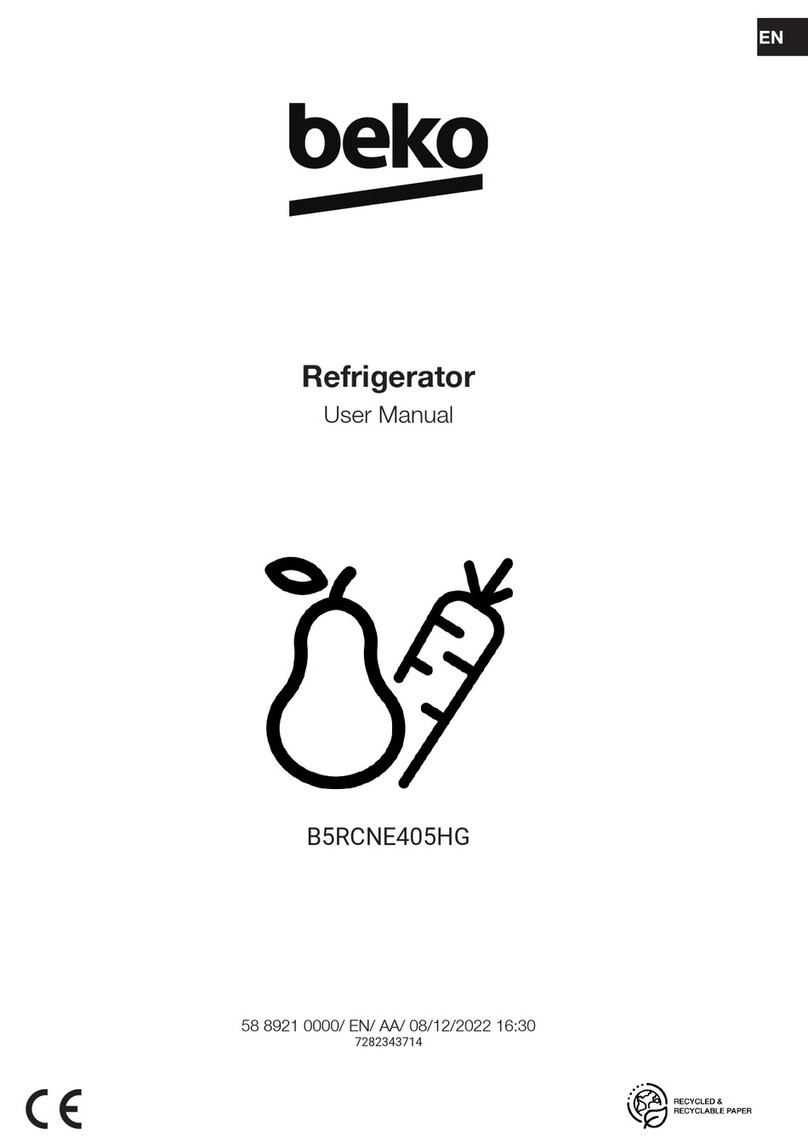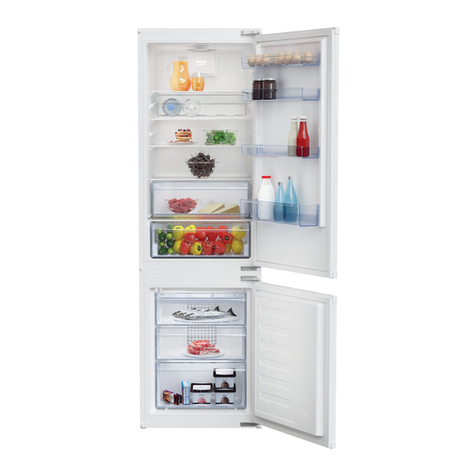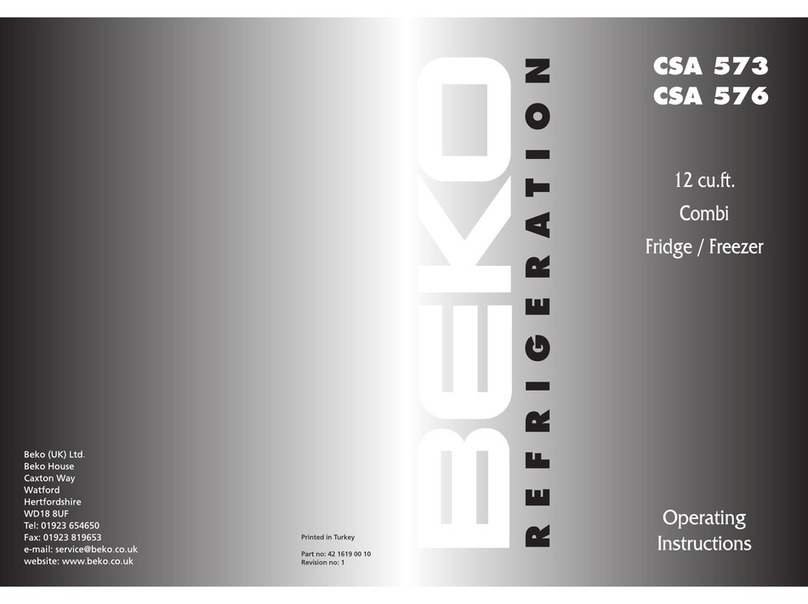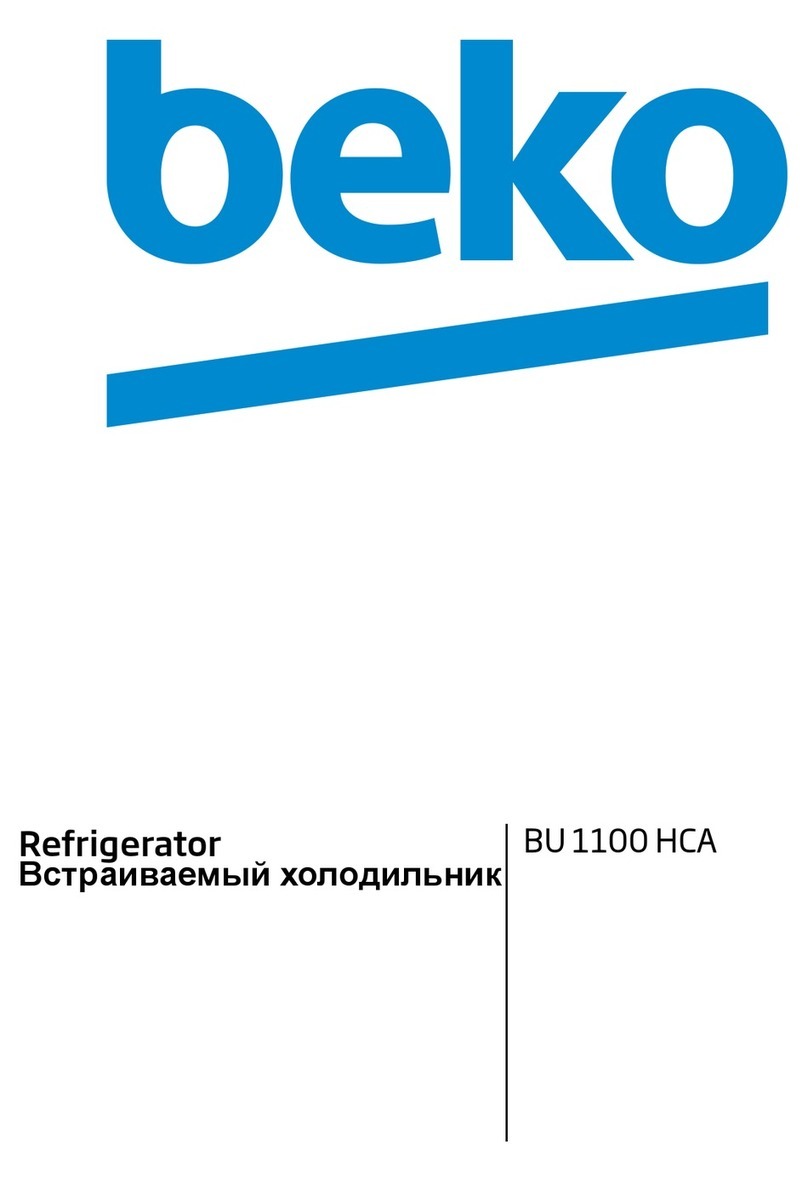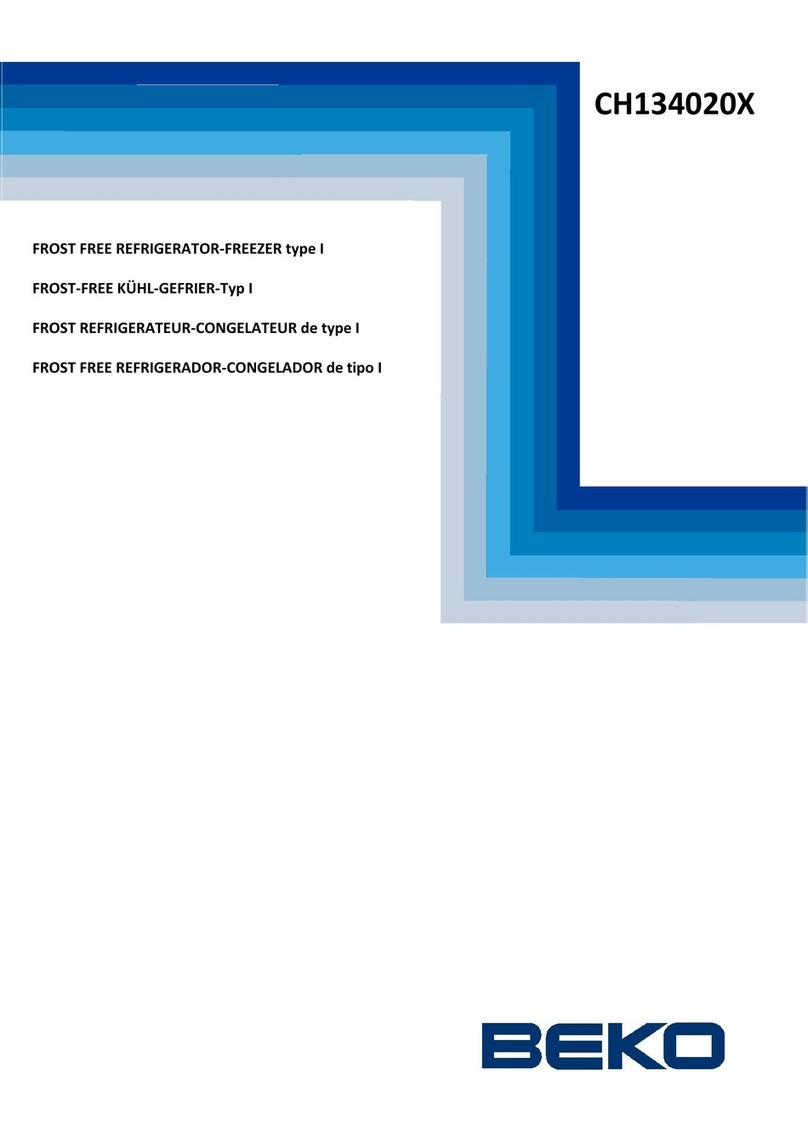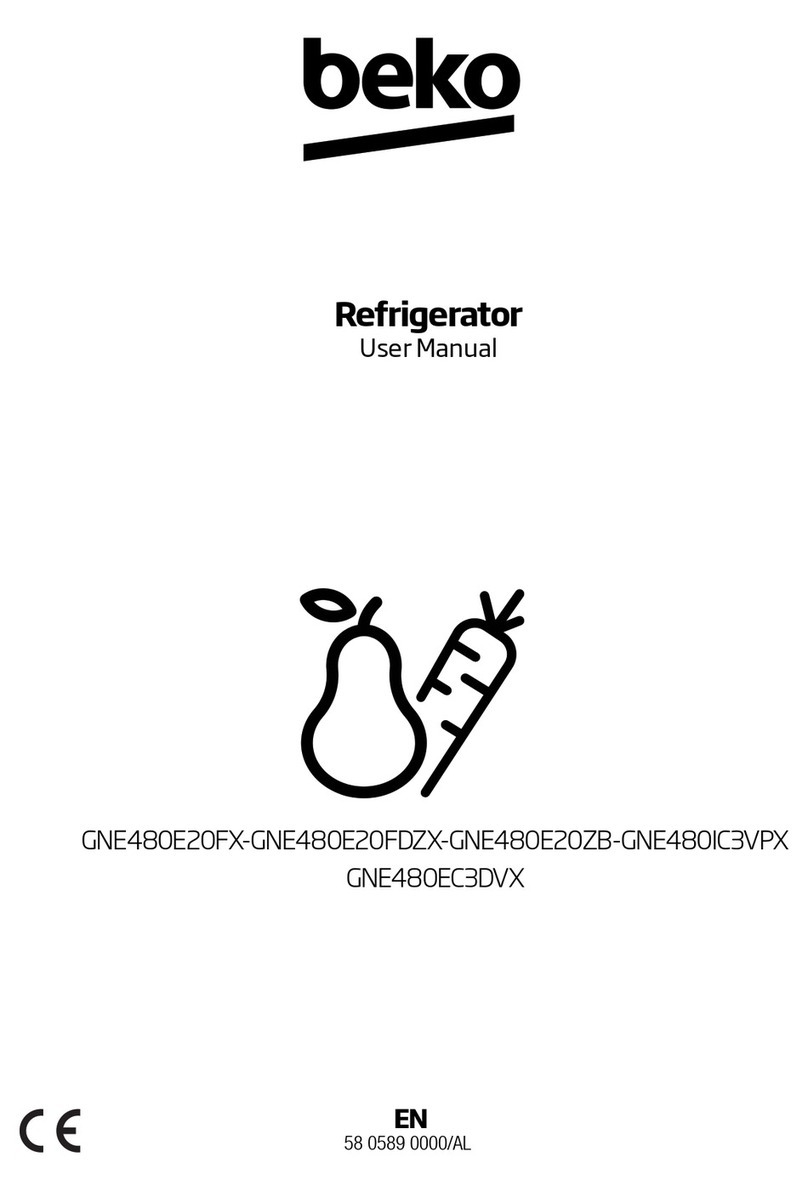EN
6
• Electrical devices must be
repaired by only authorised
persons. Repairs performed by
incompetent persons create a
risk for the user.
• In case of any failure or during
a maintenance or repair work,
disconnect your refrigerator’s
mains supply by either
turning off the relevant fuse or
unplugging your appliance.
• Do not pull by the cable when
pulling off the plug.
• Ensure highly alcoholic
beverages are stored securely
with the lid fastened and placed
upright.
• Never store spray cans
containing flammable and
explosive substances in the
refrigerator.
• Do not use mechanical devices
or other means to accelerate
the defrosting process, other
than those recommended by
the manufacturer.
• This product is not intended
to be used by persons with
physical, sensory or mental
disorders or unlearned or
inexperienced people (including
children) unless they are
attended by a person who
will be responsible for their
safety or who will instruct them
accordingly for use of the
product
• Do not operate a damaged
refrigerator. Consult with the
service agent if you have any
concerns.
• Electrical safety of your
refrigerator shall be guaranteed
only if the earth system in your
house complies with standards.
• Exposing the product to
rain, snow, sun and wind is
dangerous with respect to
electrical safety.
• Contact authorized service
when there is a power cable
damage to avoid danger.
• Never plug the refrigerator
into the wall outlet during
installation. Otherwise, risk of
death or serious injury may
arise.
• This refrigerator is intended
for only storing food items. It
must not be used for any other
purpose.
• Label of technical specifications
is located on the left wall inside
the refrigerator.
• Never connect your refrigerator
to electricity-saving systems;
they may damage the
refrigerator.
• If there is a blue light on the
refrigerator, do not look at the
blue light with optical tools.
• For manually controlled
refrigerators, wait for at least 5
minutes to start the refrigerator
after power failure.
• This operation manual should
be handed in to the new owner
of the product when it is given
to others.
• Avoid causing damage on
power cable when transporting
the refrigerator. Bending cable
may cause fire. Never place
